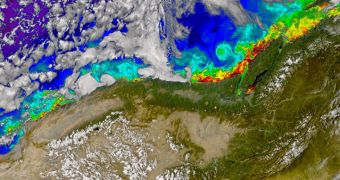Over the past few years, researchers have been discussing a wide array of possibilities in terms on geoengineering. This type of approach may unfortunately be necessary due to the fact that the international political will necessary to take care of our planet within decent limits appears to be completely lacking. What geoengineers do is basically think of massive schemes at a planetary level that would ensure temperatures do not exceed the 2-degree-Celsius threshold that was set up by scientists. Beyond this level, carbon dioxide concentrations in the atmosphere would simply be too large to prevent the devastating effects of global warming from wreaking havoc throughout the world.
In addition to shifting weather patterns, higher temperatures would also trigger massive floods in some of the planet's most populated area, including the American and Japanese megalopolises. Also, the methane that is currently stored underneath Antarctica, Greenland, and in Arctic peatlands and permafrost soils could get released. Its “prisons” are becoming thinner and thinner, as warmer overall temperatures prompt glaciers and tundra soils to warm up, and release whatever greenhouse gases they contain. But all of this, some say, can be averted through the risky schemes of geoengineering.
One of the most widely-circulated scenarios is fertilizing the world' oceans with small iron oxide particles. This calls for thousands of tons of the stuff being airborne above the waters, and then released in a uniform layer over thousands of square kilometers. What this would do is it would promote the growth of phytoplankton, the small organisms living at the surface of the ocean, and which form the basis for the trophic chain in the oceans. With more iron, the plankton will bloom in larger conglomerations, providing more food for fish, and also trapping more carbon dioxide from the atmosphere. When they die, the microorganisms carry the gas with them to the ocean floor.
But now experts have demonstrated that this method is unfeasible and impractical. Iron-enriched waters apparently also favor the development of an alga that produces a brain-damaging substance. The organism, called Pseudonitzschia, pumps out large amounts of domoic acid, which is extremely harmful.
“The toxin per cell increases, and there’s an increased success against other species. [The algae] is out there in the most pristine environments. They produce low levels of toxin, so they’re not harmful. But if you add iron, and these cells proliferate, and produce more toxin per cell, then you have a problem,” says San Francisco State University oceanographer William Cochlan, who was a coauthor of the study. A paper detailing the findings appear in the March 15 issue of the respected publication Proceedings of the National Academy of Sciences (PNAS), Wired reports.

 14 DAY TRIAL //
14 DAY TRIAL //